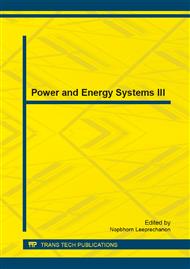p.37
p.43
p.49
p.56
p.60
p.71
p.76
p.86
p.90
Analysis on a Gas Turbine Sealing Disk Structure and Material Strength
Abstract:
To study the cause for fatigue cracking failure at pressure-balanced holes of a gas turbine compressor sealing disk, the damage impression, fractography and material composition of the damaged section were studied. Some manufacturing defects at the pressure-balanced hole edge were found, and the cracks at pressure-balanced holes are caused by high cycle fatigue (HCF). Stress analysis on the sealing disks of two types of different materials under assembly conditions and different structure dimensions were performed. The analysis results revealed that the high radial stress of pressure-balanced holes is the weak point of the original sealing disk design, and the manufacturing defects will prompt the cracking failure of holes. The studied work is valuable for performing similar fatigue failure analysis and new sealing disk structure design improvement.
Info:
Periodical:
Pages:
60-70
Citation:
Online since:
January 2014
Authors:
Price:
Сopyright:
© 2014 Trans Tech Publications Ltd. All Rights Reserved
Share:
Citation:


